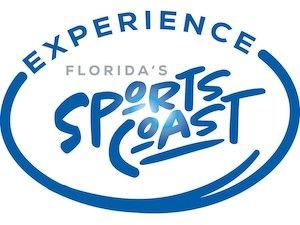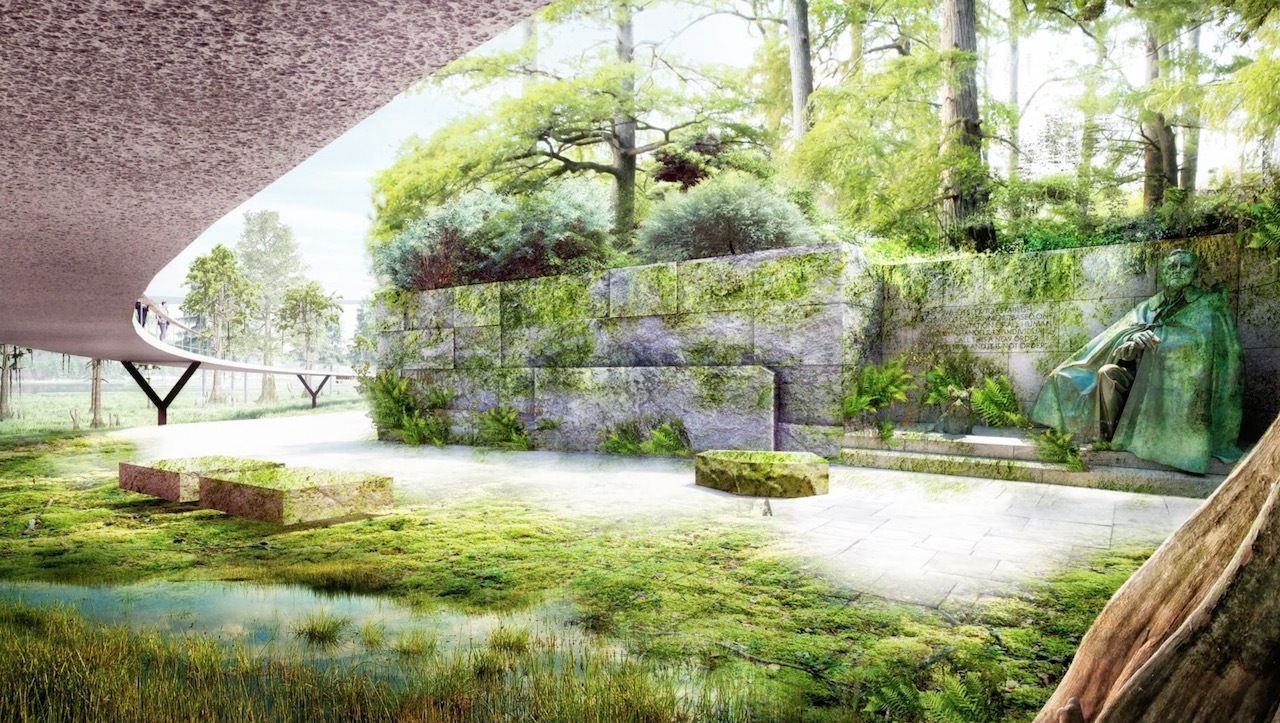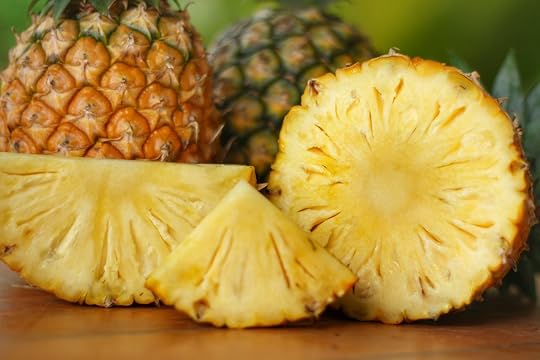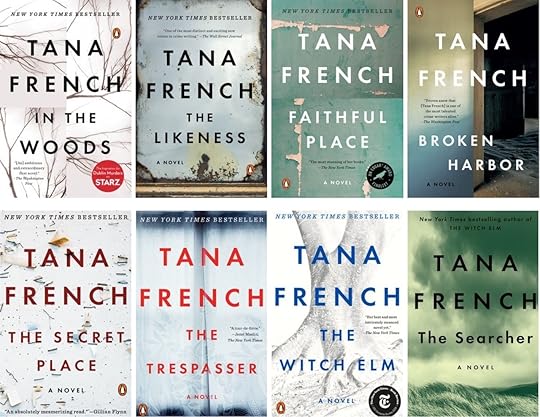Matador Network's Blog, page 761
October 22, 2020
Family guide: Florida's Sports Coast

Family adventure guide: 8 incredible experiences on Florida’s Sports Coast
By: Elizabeth Heath
Photo: Florida’s Sports Coast
We all have different feelings about traveling right now. When you’re ready, we hope you feel safe, inspired, and excited to explore Florida’s Sports Coast.
Florida has long been one of the world’s most family-friendly vacation destinations — but crowded beaches and theme parks might not feel like the ideal places to spend a holiday right now. So where can a family go for an active, fun, and socially distanced vacation in the Sunshine State?
Break out the Florida map and put your finger north of Tampa and west of Orlando. Spilling into the warm waters of the Gulf, Florida’s Sports Coast is outdoor-adventure central. There are hidden beaches, clear Gulf of Mexico waters, wetlands teeming with wildlife, and plenty of woodlands for exploring. And the Sports Coast’s #GetBacktoAdventure campaign is designed to help travelers discover the many ways to enjoy a safe vacation, one both immersed in nature and naturally socially distanced — all while discovering new adventures in the great outdoors. For families looking to get out on the water, into the woods, or even up in the air, Florida’s Sports Coast calls.
Your task? Clear the calendar, load up the Airstream, and set the GPS to one or all of the activities listed below. Whatever you choose, Florida’s Sports Coast will help you and your family #GetBacktoAdventure.

This guide is proudly produced in partnership with Florida's Sports Coast.
Note: Some of the sites and businesses listed below may not currently be operating as described due to safety guidelines. Please contact all locations prior to visiting.
Glimpsing a flying unicorn
You probably don’t believe in unicorns. And you definitely don’t believe they can fly. But once you and the kids get to know Laska the Flying Unicorn, you might just change your tune. She’s the world’s only certified, unicorn-shaped hot air balloon, and she’s a real cutie: smiling, a little chubby, with a rainbow mane and a silver horn. She even has her own Instagram feed.
You can find Laska — her name is the Czech word for love and affection — at American Balloons, where she’s ready to pose for the ultimate family selfie. (Her unique shape means she can only fly with one passenger at a time, so going for a ride isn’t an option for families.) You and your kids will thrill at seeing her lift off and delight as she floats gently over the landscape. And you’ll certainly never forget your first giant inflatable unicorn encounter.
.map * {
font-family: sans-serif !important;
}
.info-window-link {
display: block;
margin-top: 10px;
padding: 3px 10px;
border-radius: 3px;
background-color: #0099ff;
color: white !important;
font-size: 12px;
text-align: center;
}
.info-window-link:hover {
text-decoration: none;
}
', { style: 'max-width:150px' });
$('').append(marker.title).appendTo(info);
if (marker.scroll_to) {
$('', {
class: 'info-window-link',
href: '#' marker.scroll_to,
}).append('Jump To').appendTo(info);
}
infoWindow.setContent(info[0].outerHTML);
infoWindow.open(map, target);
};
$('#' id).on('click', '.info-window-link', function(e) {
e.preventDefault();
var target = $(e.target).attr('href');
$('html, body').animate({ scrollTop: $(target).offset().top - 55 }, 1000);
});
for (var i = 0; i < markers.length; i ) {
var marker = markers[i];
if (marker.lat !== undefined && marker.lng !== undefined) {
var markerObject = {
map: map,
position: { lat: parseFloat(marker.lat), lng: parseFloat(marker.lng) },
animation: google.maps.Animation.DROP,
locationId: i,
}
if(atts.ordered !== undefined) {
markerObject.label = labels[labelIndex % labels.length];
}
if(marker.icon !== undefined) {
markerObject.icon = marker.icon;
}
var mapMarker = new google.maps.Marker(markerObject);
if (mapBounds) mapBounds.extend(mapMarker.getPosition());
if (marker.title) {
var infowindow = new google.maps.InfoWindow({ content: marker.title });
if (markers.length === 1) {
setTimeout(function() {
openInfoWindow(marker, mapMarker);
}, 1200);
}
google.maps.event.addListener(mapMarker, 'click', function() {
openInfoWindow(markers[this.locationId], this);
});
}
}
}
if (mapBounds) {
map.fitBounds(mapBounds, {top:boundPadding, right:boundPadding, left:boundPadding, bottom:boundPadding});
} else if (atts.zoom) {
map.setZoom(parseInt(atts.zoom));
} else {
map.setZoom(16);
}
});
});
Photo credits: American Balloons
Swinging from the trees
Imagine leading your family through the treetops of a dense jungle, up rope ladders, across swinging bridges, and along whirring ziplines. You don’t have to go all the way to Central America to find a ropes course adventure like this — at TreeHoppers Aerial Adventure Park, kids and parents can test their skills and discover new abilities on eight different ropes and aerial courses.
Wee adventurers can try out the Little Lemurs course, built especially for kids ages 1 to 6. From there, courses increase in difficulty from yellow to double-black, all involving a series of platforms connected by cables, ladders, wooden and rope bridges, and ziplines. Young kids can build self-confidence on easy to medium-difficulty courses, while teens can tackle the black and double-black courses once they’ve mastered the others. A fun, safe, and exciting three-hour session at TreeHoppers means family bonding, pushing boundaries, and defying gravity.
.map * {
font-family: sans-serif !important;
}
.info-window-link {
display: block;
margin-top: 10px;
padding: 3px 10px;
border-radius: 3px;
background-color: #0099ff;
color: white !important;
font-size: 12px;
text-align: center;
}
.info-window-link:hover {
text-decoration: none;
}
', { style: 'max-width:150px' });
$('').append(marker.title).appendTo(info);
if (marker.scroll_to) {
$('', {
class: 'info-window-link',
href: '#' marker.scroll_to,
}).append('Jump To').appendTo(info);
}
infoWindow.setContent(info[0].outerHTML);
infoWindow.open(map, target);
};
$('#' id).on('click', '.info-window-link', function(e) {
e.preventDefault();
var target = $(e.target).attr('href');
$('html, body').animate({ scrollTop: $(target).offset().top - 55 }, 1000);
});
for (var i = 0; i < markers.length; i ) {
var marker = markers[i];
if (marker.lat !== undefined && marker.lng !== undefined) {
var markerObject = {
map: map,
position: { lat: parseFloat(marker.lat), lng: parseFloat(marker.lng) },
animation: google.maps.Animation.DROP,
locationId: i,
}
if(atts.ordered !== undefined) {
markerObject.label = labels[labelIndex % labels.length];
}
if(marker.icon !== undefined) {
markerObject.icon = marker.icon;
}
var mapMarker = new google.maps.Marker(markerObject);
if (mapBounds) mapBounds.extend(mapMarker.getPosition());
if (marker.title) {
var infowindow = new google.maps.InfoWindow({ content: marker.title });
if (markers.length === 1) {
setTimeout(function() {
openInfoWindow(marker, mapMarker);
}, 1200);
}
google.maps.event.addListener(mapMarker, 'click', function() {
openInfoWindow(markers[this.locationId], this);
});
}
}
}
if (mapBounds) {
map.fitBounds(mapBounds, {top:boundPadding, right:boundPadding, left:boundPadding, bottom:boundPadding});
} else if (atts.zoom) {
map.setZoom(parseInt(atts.zoom));
} else {
map.setZoom(16);
}
});
});
Photo credits: Florida’s Sports Coast
Finding your balance
Gliding across the calm waters of the Gulf of Mexico or a quiet canal on a SUP (stand-up paddleboard) looks like it might be too challenging for young kids. But with their lighter weights and lower centers of gravity, kids often take to SUPing quicker than adults do! A few hours or a whole day spent with rental SUPs can make for a great adventure, with plenty of laughs — and likely a few splashes — as everyone gets the hang of it.
Smaller kids can sit on the front end of a SUP and let parents do the paddling, while older kids will likely prefer their own board. SUPs are available at marinas all along the Sports Coast, but Werner-Boyce Salt Springs State Park is hard to beat with its mangrove-lined waterways, salt marshes, and private inlets — and onsite rentals.
.map * {
font-family: sans-serif !important;
}
.info-window-link {
display: block;
margin-top: 10px;
padding: 3px 10px;
border-radius: 3px;
background-color: #0099ff;
color: white !important;
font-size: 12px;
text-align: center;
}
.info-window-link:hover {
text-decoration: none;
}
', { style: 'max-width:150px' });
$('').append(marker.title).appendTo(info);
if (marker.scroll_to) {
$('', {
class: 'info-window-link',
href: '#' marker.scroll_to,
}).append('Jump To').appendTo(info);
}
infoWindow.setContent(info[0].outerHTML);
infoWindow.open(map, target);
};
$('#' id).on('click', '.info-window-link', function(e) {
e.preventDefault();
var target = $(e.target).attr('href');
$('html, body').animate({ scrollTop: $(target).offset().top - 55 }, 1000);
});
for (var i = 0; i < markers.length; i ) {
var marker = markers[i];
if (marker.lat !== undefined && marker.lng !== undefined) {
var markerObject = {
map: map,
position: { lat: parseFloat(marker.lat), lng: parseFloat(marker.lng) },
animation: google.maps.Animation.DROP,
locationId: i,
}
if(atts.ordered !== undefined) {
markerObject.label = labels[labelIndex % labels.length];
}
if(marker.icon !== undefined) {
markerObject.icon = marker.icon;
}
var mapMarker = new google.maps.Marker(markerObject);
if (mapBounds) mapBounds.extend(mapMarker.getPosition());
if (marker.title) {
var infowindow = new google.maps.InfoWindow({ content: marker.title });
if (markers.length === 1) {
setTimeout(function() {
openInfoWindow(marker, mapMarker);
}, 1200);
}
google.maps.event.addListener(mapMarker, 'click', function() {
openInfoWindow(markers[this.locationId], this);
});
}
}
}
if (mapBounds) {
map.fitBounds(mapBounds, {top:boundPadding, right:boundPadding, left:boundPadding, bottom:boundPadding});
} else if (atts.zoom) {
map.setZoom(parseInt(atts.zoom));
} else {
map.setZoom(16);
}
});
});
Photo credits: Shutterstock/Sanchik and Florida’s Sports Coast
Tossing in a line
O Captain! My Captain! Book a private fishing charter for you and the kids, and let an experienced angler take you where the fish are biting, bait your hooks, and help with casting tips. With any luck, there will even be fish for your trusty captain to fillet for you!
Whether you choose to ply the Gulf of Mexico or the calm mangrove flats of the Sports Coast’s backwaters, a private charter takes all the fuss and guesswork out of planning a trip. From fishing licenses to bait, tackle, and, of course, expert knowledge of the best areas for angling, your captain takes care of it all so you and your family can focus on fun and fishing. Check the fishing and charters page of the Sports Coast website for purveyors up and down the shore.
The freedom to motor through the close-in waters of the Gulf, anchor near barrier islands, and fish, swim, and snorkel at your own pace — that’s what a self-piloted pontoon boat rental can offer you and your family. These easy-to-navigate boats require minimal boating experience and are perfect for casual cruising along the shallow waters of the coast. Watch for dolphins, manatees, sea turtles, and rays, and jump off the side wherever the water looks inviting. Anchor just off a remote beach and search for seashells, build a sandcastle, or spread out a picnic lunch. Reachable only by boat, Anclote Key Preserve State Park is a favorite destination for Sports Coast boaters, with unspoiled beaches, a historic lighthouse, and picnic facilities. Windsong Charters & Boat Rentals can set you and your crew up with a pontoon and suggest routes and destinations through residential channels or sheltered Gulf waters. They also rent more traditional paddlecraft, like kayaks and canoes. The season may be short, but the rewards are sweet. Florida’s Sports Coast is home to some of the best waters for bay scallops, and for 10 days every July, amateur scallop hunters can take home up to two gallons per day of these prized mollusks. To start your scallop hunt, you’ll need a mask, snorkel and fins, a mesh bag, a requisite red-and-white diver-down flag, and a saltwater fishing license. Some of the seagrass beds that provide habitat for scallops are located right offshore, but you’ll want to hire a boat with a local fishing charter captain to take you right to the best scalloping spots and show you how it’s done. Note: This is an activity best suited to families with older kids and teens. Check the Florida’s Sports Coast scalloping page for more info, plus some tasty recipes. For big, bouncy fun on the water, head to The Lift Adventure Park, where a huge inflatable aqua-jungle gym tempts kids ages 7 and up to run, slip, swing, slide, and climb across a slippery agility course. Half the fun is falling in, of course, and the spring-fed lake waters of northern Pasco County’s SunWest Park couldn’t be more inviting. Kids and teens looking for more of a challenge can tack on a wakeboarding session and learn to stay upright, catch a wave, and even jump and spin while being towed by a cable. The park also offers SUP and kayak rentals, a swimming beach, and volleyball. For a real taste of adventure and getting away from it all, intrepid families can go off-grid by spending one or more nights at a primitive campsite in one of the pristine wilderness areas within Florida’s Sports Coast. Primitive camping means no frills — getting to most campsites involves a walk of 2-3 miles and facilities are minimal, often just a firepit, a grill, and a picnic table. Some sites even require that you bring in your own water. But the payoff? Glorious privacy, with just the soothing sounds of nature to lull you to sleep after you’ve spent the evening roasting marshmallows and stargazing. Primitive campsites can be found at Withlacoochee River Park, Anclote Key Preserve State Park, and both Crews Lake and Jay B. Starkey Wilderness Parks. For families who want to rough it a little less, several parks offer more developed tent campsites and cabins. After all, there’s no one way to #GetBacktoAdventure. The post Family adventure guide: 8 incredible experiences on Florida’s Sports Coast appeared first on Matador Network.
.map * {
font-family: sans-serif !important;
}
.info-window-link {
display: block;
margin-top: 10px;
padding: 3px 10px;
border-radius: 3px;
background-color: #0099ff;
color: white !important;
font-size: 12px;
text-align: center;
}
.info-window-link:hover {
text-decoration: none;
}
', { style: 'max-width:150px' });
$('').append(marker.title).appendTo(info);
if (marker.scroll_to) {
$('', {
class: 'info-window-link',
href: '#' marker.scroll_to,
}).append('Jump To').appendTo(info);
}
infoWindow.setContent(info[0].outerHTML);
infoWindow.open(map, target);
};
$('#' id).on('click', '.info-window-link', function(e) {
e.preventDefault();
var target = $(e.target).attr('href');
$('html, body').animate({ scrollTop: $(target).offset().top - 55 }, 1000);
});
for (var i = 0; i < markers.length; i ) {
var marker = markers[i];
if (marker.lat !== undefined && marker.lng !== undefined) {
var markerObject = {
map: map,
position: { lat: parseFloat(marker.lat), lng: parseFloat(marker.lng) },
animation: google.maps.Animation.DROP,
locationId: i,
}
if(atts.ordered !== undefined) {
markerObject.label = labels[labelIndex % labels.length];
}
if(marker.icon !== undefined) {
markerObject.icon = marker.icon;
}
var mapMarker = new google.maps.Marker(markerObject);
if (mapBounds) mapBounds.extend(mapMarker.getPosition());
if (marker.title) {
var infowindow = new google.maps.InfoWindow({ content: marker.title });
if (markers.length === 1) {
setTimeout(function() {
openInfoWindow(marker, mapMarker);
}, 1200);
}
google.maps.event.addListener(mapMarker, 'click', function() {
openInfoWindow(markers[this.locationId], this);
});
}
}
}
if (mapBounds) {
map.fitBounds(mapBounds, {top:boundPadding, right:boundPadding, left:boundPadding, bottom:boundPadding});
} else if (atts.zoom) {
map.setZoom(parseInt(atts.zoom));
} else {
map.setZoom(16);
}
});
});
Photo credits: Shutterstock/Maridav
.map * {
font-family: sans-serif !important;
}
.info-window-link {
display: block;
margin-top: 10px;
padding: 3px 10px;
border-radius: 3px;
background-color: #0099ff;
color: white !important;
font-size: 12px;
text-align: center;
}
.info-window-link:hover {
text-decoration: none;
}
', { style: 'max-width:150px' });
$('').append(marker.title).appendTo(info);
if (marker.scroll_to) {
$('', {
class: 'info-window-link',
href: '#' marker.scroll_to,
}).append('Jump To').appendTo(info);
}
infoWindow.setContent(info[0].outerHTML);
infoWindow.open(map, target);
};
$('#' id).on('click', '.info-window-link', function(e) {
e.preventDefault();
var target = $(e.target).attr('href');
$('html, body').animate({ scrollTop: $(target).offset().top - 55 }, 1000);
});
for (var i = 0; i < markers.length; i ) {
var marker = markers[i];
if (marker.lat !== undefined && marker.lng !== undefined) {
var markerObject = {
map: map,
position: { lat: parseFloat(marker.lat), lng: parseFloat(marker.lng) },
animation: google.maps.Animation.DROP,
locationId: i,
}
if(atts.ordered !== undefined) {
markerObject.label = labels[labelIndex % labels.length];
}
if(marker.icon !== undefined) {
markerObject.icon = marker.icon;
}
var mapMarker = new google.maps.Marker(markerObject);
if (mapBounds) mapBounds.extend(mapMarker.getPosition());
if (marker.title) {
var infowindow = new google.maps.InfoWindow({ content: marker.title });
if (markers.length === 1) {
setTimeout(function() {
openInfoWindow(marker, mapMarker);
}, 1200);
}
google.maps.event.addListener(mapMarker, 'click', function() {
openInfoWindow(markers[this.locationId], this);
});
}
}
}
if (mapBounds) {
map.fitBounds(mapBounds, {top:boundPadding, right:boundPadding, left:boundPadding, bottom:boundPadding});
} else if (atts.zoom) {
map.setZoom(parseInt(atts.zoom));
} else {
map.setZoom(16);
}
});
});
Photo credits: Florida’s Sports Coast and Shutterstock/Gus Garcia
Digging into scallop season
.map * {
font-family: sans-serif !important;
}
.info-window-link {
display: block;
margin-top: 10px;
padding: 3px 10px;
border-radius: 3px;
background-color: #0099ff;
color: white !important;
font-size: 12px;
text-align: center;
}
.info-window-link:hover {
text-decoration: none;
}
', { style: 'max-width:150px' });
$('').append(marker.title).appendTo(info);
if (marker.scroll_to) {
$('', {
class: 'info-window-link',
href: '#' marker.scroll_to,
}).append('Jump To').appendTo(info);
}
infoWindow.setContent(info[0].outerHTML);
infoWindow.open(map, target);
};
$('#' id).on('click', '.info-window-link', function(e) {
e.preventDefault();
var target = $(e.target).attr('href');
$('html, body').animate({ scrollTop: $(target).offset().top - 55 }, 1000);
});
for (var i = 0; i < markers.length; i ) {
var marker = markers[i];
if (marker.lat !== undefined && marker.lng !== undefined) {
var markerObject = {
map: map,
position: { lat: parseFloat(marker.lat), lng: parseFloat(marker.lng) },
animation: google.maps.Animation.DROP,
locationId: i,
}
if(atts.ordered !== undefined) {
markerObject.label = labels[labelIndex % labels.length];
}
if(marker.icon !== undefined) {
markerObject.icon = marker.icon;
}
var mapMarker = new google.maps.Marker(markerObject);
if (mapBounds) mapBounds.extend(mapMarker.getPosition());
if (marker.title) {
var infowindow = new google.maps.InfoWindow({ content: marker.title });
if (markers.length === 1) {
setTimeout(function() {
openInfoWindow(marker, mapMarker);
}, 1200);
}
google.maps.event.addListener(mapMarker, 'click', function() {
openInfoWindow(markers[this.locationId], this);
});
}
}
}
if (mapBounds) {
map.fitBounds(mapBounds, {top:boundPadding, right:boundPadding, left:boundPadding, bottom:boundPadding});
} else if (atts.zoom) {
map.setZoom(parseInt(atts.zoom));
} else {
map.setZoom(16);
}
});
});
Photo credits: Florida’s Sports Coast
Slipping, jumping, and sliding
.map * {
font-family: sans-serif !important;
}
.info-window-link {
display: block;
margin-top: 10px;
padding: 3px 10px;
border-radius: 3px;
background-color: #0099ff;
color: white !important;
font-size: 12px;
text-align: center;
}
.info-window-link:hover {
text-decoration: none;
}
', { style: 'max-width:150px' });
$('').append(marker.title).appendTo(info);
if (marker.scroll_to) {
$('', {
class: 'info-window-link',
href: '#' marker.scroll_to,
}).append('Jump To').appendTo(info);
}
infoWindow.setContent(info[0].outerHTML);
infoWindow.open(map, target);
};
$('#' id).on('click', '.info-window-link', function(e) {
e.preventDefault();
var target = $(e.target).attr('href');
$('html, body').animate({ scrollTop: $(target).offset().top - 55 }, 1000);
});
for (var i = 0; i < markers.length; i ) {
var marker = markers[i];
if (marker.lat !== undefined && marker.lng !== undefined) {
var markerObject = {
map: map,
position: { lat: parseFloat(marker.lat), lng: parseFloat(marker.lng) },
animation: google.maps.Animation.DROP,
locationId: i,
}
if(atts.ordered !== undefined) {
markerObject.label = labels[labelIndex % labels.length];
}
if(marker.icon !== undefined) {
markerObject.icon = marker.icon;
}
var mapMarker = new google.maps.Marker(markerObject);
if (mapBounds) mapBounds.extend(mapMarker.getPosition());
if (marker.title) {
var infowindow = new google.maps.InfoWindow({ content: marker.title });
if (markers.length === 1) {
setTimeout(function() {
openInfoWindow(marker, mapMarker);
}, 1200);
}
google.maps.event.addListener(mapMarker, 'click', function() {
openInfoWindow(markers[this.locationId], this);
});
}
}
}
if (mapBounds) {
map.fitBounds(mapBounds, {top:boundPadding, right:boundPadding, left:boundPadding, bottom:boundPadding});
} else if (atts.zoom) {
map.setZoom(parseInt(atts.zoom));
} else {
map.setZoom(16);
}
});
});
Photo credits: The Lift Adventure Park and Shutterstock/goldenporshe
Going off-grid
.map * {
font-family: sans-serif !important;
}
.info-window-link {
display: block;
margin-top: 10px;
padding: 3px 10px;
border-radius: 3px;
background-color: #0099ff;
color: white !important;
font-size: 12px;
text-align: center;
}
.info-window-link:hover {
text-decoration: none;
}
', { style: 'max-width:150px' });
$('').append(marker.title).appendTo(info);
if (marker.scroll_to) {
$('', {
class: 'info-window-link',
href: '#' marker.scroll_to,
}).append('Jump To').appendTo(info);
}
infoWindow.setContent(info[0].outerHTML);
infoWindow.open(map, target);
};
$('#' id).on('click', '.info-window-link', function(e) {
e.preventDefault();
var target = $(e.target).attr('href');
$('html, body').animate({ scrollTop: $(target).offset().top - 55 }, 1000);
});
for (var i = 0; i < markers.length; i ) {
var marker = markers[i];
if (marker.lat !== undefined && marker.lng !== undefined) {
var markerObject = {
map: map,
position: { lat: parseFloat(marker.lat), lng: parseFloat(marker.lng) },
animation: google.maps.Animation.DROP,
locationId: i,
}
if(atts.ordered !== undefined) {
markerObject.label = labels[labelIndex % labels.length];
}
if(marker.icon !== undefined) {
markerObject.icon = marker.icon;
}
var mapMarker = new google.maps.Marker(markerObject);
if (mapBounds) mapBounds.extend(mapMarker.getPosition());
if (marker.title) {
var infowindow = new google.maps.InfoWindow({ content: marker.title });
if (markers.length === 1) {
setTimeout(function() {
openInfoWindow(marker, mapMarker);
}, 1200);
}
google.maps.event.addListener(mapMarker, 'click', function() {
openInfoWindow(markers[this.locationId], this);
});
}
}
}
if (mapBounds) {
map.fitBounds(mapBounds, {top:boundPadding, right:boundPadding, left:boundPadding, bottom:boundPadding});
} else if (atts.zoom) {
map.setZoom(parseInt(atts.zoom));
} else {
map.setZoom(16);
}
});
});
Photo credits: Shutterstock/Essence of a Memory

This guide is proudly produced in partnership with Florida's Sports Coast.

October 21, 2020
National Mall Tidal Basin proposals

The Tidal Basin on Washington DC’s National Mall is an iconic landscape connecting some of the country’s most famous memorials — including those to Jefferson, MLK Jr., and FDR. Urbanization, rising tide levels, and the sinking of the area, however, have led to the basin’s gradual deterioration. The waters of the Potomac River flood the Tidal Basin twice daily, making the footpath impracticable, and threatening the famous cherry trees whose roots are constantly flooded.
Teresa Durkin, executive vice president at the Trust for the National Mall, said, “After 130-some years, we’ve got pathways that are too narrow [which pushes visitors to walk on the grass and] the trees get trampled. The trees get flooded with the brackish water from the flooding. So there’s a myriad of issues and problems here.”
To save the National Mall’s Tidal Basin, the National Trust for Historic Preservation, the Trust for The National Mall, and the National Park Service created the Ideas Lab where visitors can share their experience of visiting the site and express their ideas and concerns for its future. The lab also showcases the vision of five professional landscape architects for the site.
The five architects include DLANDstudio, GNN, Hood Design Studio, James Corner Field Operations, and Reed Hilderbrand. The studios’ detailed proposals to rescue the 19th-century site, including photo and video renderings, are all available on the Ideas Lab.

Photo: DLAND Studios + Ideas LabXXXX
DLANDstudio’s plan involves creating a land bridge between the Jefferson Memorial and the White House, as well as a jetty off the Lincoln Memorial that will also be home to the Martin Luther King Jr. Memorial. There’ll also be green walls, wetlands, swimmable waters, and an organic berm to avoid floodings. The memorials to Roosevelt and King, as well as the cherry trees, will be moved.

Photo: Hood Design Studio + Ideas Lab
Hood Design Studio’s proposal calls for emphasizing the lost cultural history of the area and incorporating that history into the landscape. According to NPR, Walter Hood wrote in his proposal that his vision for the space includes “replacing the classical design of the romantic and baroque with other stories embedded in the American landscape — and integrates storytelling around Hush Harbors, antebellum places where African American slaves went to practice their religion at Potomac Plantations.”

Photo: GGN Studio + Ideas Lab
GGN’s plan presents incremental changes in three phases between now and 2090 that will buy the carers of the site some time to accommodate the sea-level rise. The proposal focuses on environmental changes including creating a flood-plain forest, wind gap meadows, and tidal marshes. Monuments would also be “adapted, protected, or relocated.”

Photo: James Corner Field Operation + Ideas Lab

Photo: James Corner Field Operation + Ideas Lab
James Corner is looking at a proposal that would effectively let nature take its course and allow the inevitable flooding to take place. The plan calls for an elevated circular walk where visitors can view monuments that will eventually be destroyed. In his presentation, Corner wrote, “The monuments in this scenario will gracefully age and decay, melancholia prevails, sitting as entropic ruins, a natural time where daily flooding is absorbed as part of nature’s cycle.”

Photo: Reed Hilderbrand + Ideas Lab
Reed Hildebrand’s approach is to build upon the diverse experiences and cultural moments the Tidal Basin represents. The plan is to make the space equally a commemorative landscape, recreational parkland, an ecologically vibrant living system. The cherry trees would be moved upland, a pedestrian bridge would be built, gathering areas of open lawns would be created for visitors to take in the site, and several circuit walks would guide visitors throughout the area.
The initiative is not considered a design competition but rather a creative collaboration, out of which a sustainable solution will hopefully emerge. 
More like thisLGBTQ TravelThe ultimate LGBTQ guide to Washington, DC
The post The 5 landscape proposals that aim to save the National Mall’s Tidal Basin appeared first on Matador Network.

RV versus van road trip

2020 has been the year to get out on the road. It seems everyone has decided to try an RV trip across the country or to spend the online school semester on four wheels — with record RV sales and more people setting out on their first #vanlife excursion. Even among those who aren’t planning to ride out the entire pandemic on the road in an RV, van, or Airstream, the popularity of vehicle-based vacations has soared this year.
There are plenty of ways to drive, and which option is right for you depends on a lot of factors. We can’t make those decisions for you, but we can help you think about what really matters to you. Here’s what to keep in mind.
The size of your group and your stuff
This is the most obvious first consideration. If you’re a family of five, a van may just be too tight. Or if you are three travelers with two big dogs, you’ve probably sized yourself out of a van. But that doesn’t mean that bigger is best, since smallness has its own appeal.
“Everything is compact. You live in a compact space with limited resources,” says San Francisco resident Nina Thompson of life in an RV. Every year, Nina and her husband, along with their two kids and their cousin, take a late-summer RV trip. For Thompson, that compactness is part of the appeal. Thinking of her kids, she says there are “a lot of practical life skills you get when you go on a trip like that.”
Your need for comfort

Photo: Andrey Armyagov/Shutterstock
Becca Worple and her husband sold their house in Ohio and set out West with their son and two big dogs. After making it all the way to Southern California, they turned around and went back, picking up their daughter in Boston and then exploring the Northeast, reaching Maine — logging over 16,000 miles. For them, an RV gave them control over their environment, something Worple found appealing during the pandemic.
“I loved it,” said Worple, who said the family was self-sufficient, not eating at restaurants or going into stores. With comfortable beds and warm showers, Worple appreciated being “able to pull up into an RV park and have your world right there.”
Not everyone sees the RV amenities as a necessity, even on a longer trip. Suzie Black and her husband Matt Mohr are taking their eight-year-old daughter “roam schooling” in their sprinter van this fall since her classes are online anyway. They’ve been traveling from Seattle to Southern California and Utah, and then will head back to Seattle.
The lack of a shower can catch up with them in some spots, says Black, laughing that, “Five days without a shower and then we’re all pretty gross.” But most of the time they can find a campground or a HipCamp to stay at when they need to.
How you like to travel

Photo: Monkey Business Images/Shutterstock
Whether you’re a planner or spontaneous matters here. Given the size of RVs, you’re more limited in where you can park, which can require making reservations in advance. Especially this year, when so many people were on the road, Thompson and Worple say they had to plan in advance where they wanted to stay in the RV.
“It’s kind of frenetic outside national parks because there are so many RVs,” says Thompson. However, she notes that there are plenty of other places to stay as well, such as BLM land and national forests.
Vans, on the other hand, don’t require advanced reservations much of the time. “Sprinter vans are more conducive to our kind of lifestyle,” says Black. “The van is pretty stealth. We can park anywhere, and we just look like a delivery van — with mountain bikes and surfboards,” she says.
How handy you are
Both RVs and vans can break down, and mechanical hiccups are an issue you will hear from pretty much anyone who spends a lot of time in these sleep-ready vehicles.
“Make sure everything works before you leave” is Thompson’s top piece of advice to anyone setting out on an RV trip for the first time. She recommends ensuring the refrigerator works, there’s enough water, the heater is functioning, the generator works correctly, and so on.
For some, this could impact whether they opt for a van, since often vans are tricked out by their owners. Black’s husband Matt Mohr did most of the work for their sprinter van, building out the interior. While he did hire someone to get the electrical done — installing three golf cart batteries that regenerate when they are driving — he would be able to fix them on his own if needed.
Your budget
If you’re planning to rent a vehicle, a van will likely cost less than an RV to rent. When my daughter and I took an eight-day surf trip along the California coast last August, the low-budget van we bought — outfitted with a fold-out bed that was so complicated we left it open, as well as a sink and a Coleman stove in back — cost much less than what we would have paid for an RV. Likewise, our gas bill was lower than it would have been in a larger vehicle.
On the other hand, buying a used RV can be less expensive than a van, unless you manage to find a second-hand van. Black says that although her husband did the work on their sprinter van himself, you can buy ready-made kits to outfit your vans from places like Adventure Wagon in Oregon, which start at $12,500 apiece. If you opt for a previously owned Airstream, though, you aren’t likely to get the same savings as on a typical used RV or van, as Airstreams tend to hold their value.
The environment
Both Thompson and Worple say gas mileage was a factor in choosing their RV, whether renting or buying. Thompson says she and her family opted for a relatively small RV for a lesser carbon footprint. Worple said the 25-foot RV she and her husband purchased had streamlined features that would permit better gas mileage. Airstreams, as the name suggests, are the most streamlined RV option of all. If even lower fuel consumption matters to you, then a diesel sprinter van is going to consume less fuel and have the lowest emissions.
The weather

Photo: Zephyr_p/Shutterstock
While RVs come with air conditioning and heaters that can handle any weather, that’s not always the case with vans. If you want to use a van to get out in the snow, there are several winter-ready vans you can rent. For their part, Black and Mohr are planning on installing a heater that will run on their car’s diesel engine, so they can take it on ski trips this winter. In the meantime, it’s just not up to the cold weather. Although it’s sunny this week in Utah, snow is coming, and Black suspects they’ll need to check into a hotel.
Likewise, if you find yourself traveling in a very rainy location, ask yourself whether your van set-up can support you cooking and eating inside. Some less expensive vans have the kitchen accessible only via an open trunk — a non-starter in heavy weather.
The coolness factor

Photo: Yupgi/Shutterstock
There’s certainly a coolness factor in #vanlife, and maybe that’s important to you. Black and Mohr, both surfers from Australia, worked as ski guides in Whistler for years. Somehow, they’re the hip people you’d expect to opt for van life. But their daughter is now eight, and they are beginning to feel the tight space. As long as the weather is good, their daughter can play outside when Suzie is cooking, but she knows they won’t be able to pull off van life too much longer.
If you want to have your comfort and your coolness, too, then an Airstream would be the option for you. Airstreams are RVs but with an aerodynamic style and a cool, retro-chic outside. In the same way that you’ll find #vanlife communities online, #Airstream is also full of stunning images — albeit not nearly as many. Inside the sleek, silver Airstream, you can opt for not just the comfort of a typical RV but the luxury of real wood finishes, high-end kitchen appliances, and anything else you might want for your home on four wheels.
Where you want to go

Photo: shutterupeire/Shutterstock
One reason Black so appreciates being able to park their van anywhere is that she and her husband actually owned a Winnebago when their daughter was younger. Although they had plenty of space, they couldn’t park everywhere they wanted to when visiting their friends in cities or certain beach towns. RVs don’t fit in many urban driveways, and some communities just don’t like to see RVs hanging out too many days — or even one night.
On the other hand, for wide-open spaces, either an RV or van works — as long as you can fit enough supplies in your van to get off the grid. Ultimately, that’s a freedom afforded you with any vehicle.
In our current COVID-19 world, when people might be seeking more self-contained travel, it’s important not to lose sight of what made RVs and vans great in the first place: the ability to get to places you can’t really access any other way.
As Thompson says of her family’s trips to places like the Navajo Nation or throughout the Southwest, “It’s an opportunity to see a part of the US that’s hard to see when you travel by plane,” she says. “Everywhere we’ve been, you can’t just fly there and see that stuff. Whether it’s an RV or not, driving through all that space is an experience in itself.” 
More like thisLifestyleRez Roads is bringing #vanlife to the Navajo Nation
The post How to choose between an RV or van for your next big road trip appeared first on Matador Network.

Gorilla trekking during COVID-19

In the pre-dawn glow of Rwanda’s Volcanoes National Park, the anticipatory exhilaration in my trekking group was palpable. We were on the verge of ascending the dense, nettle-filled jungle from 10,000 feet until reaching the Isimbi family, made up of some 20 individual mountain gorillas headed by the silverback known as Muturengere. If the obvious reverence of the local guides and soldiers accompanying us wasn’t contagious enough, we would soon discover for ourselves the elation of stepping foot among great apes.
However, admiration is not the only contagious aspect of close encounters with gorillas. We humans can easily get them sick.
While no cases of COVID-19 have yet been detected in mountain gorilla populations, this is more likely due to successful risk mitigation, rather than a lack of physiological possibility. Rwanda in particular demonstrated leadership in maintaining conservation efforts in an uncertain economy, including keeping disease away from the animals.
“Gorillas continue to be monitored by trackers, researchers and vet teams during the absence of tourists,” says Prosper Uwingeli, Chief Park Warden at Volcanoes National Park.
This was made possible by the Rwandan government allocating funding to ensure that their national parks would remain looked after, continuing to pay rangers to keep the wildlife protected from poaching and the land protected from illegal mining. Additionally, rangers elected to live away from their families for weeks at a time in order to prevent bringing COVID-19 near wildlife.
But now that Rwanda and Uganda have reopened for tourism, the question about our direct impact on the health of these endangered creatures resurfaces. With an estimated 1,000 mountain gorillas in existence, the life of each one is invaluable to the overall ecosystem.

Photo: Ali Wunderman
“COVID has not been an issue, but that’s not a reason to be complacent,” cautions Praveen Moman, a pioneer of great ape tourism in East Africa, and founder of Volcanoes Safaris.
In fact, the transmissibility of respiratory illnesses from humans to great apes is well documented. “Acute and fatal respiratory illnesses known to have come from humans have occurred in habituated groups of wild chimpanzees,” explains Arend de Haas, Conservation Director at the African Conservation Foundation, in an article for The Conversation.
Even acclaimed American primatologist Dian Fossey, who famously lived among Rwanda’s gorillas, had hesitations about allowing humans into gorilla habitats due to the potential for disease transmission.
Now with a pervasive and often undetectable respiratory disease ravaging the planet, Fossey’s trepidation finds solid footing. However, complicating the matter is the reliance of the local community on the significant funds brought in by the gorilla trekking experience, perhaps one of the loftiest travel bucket-list goals around. Wildlife conservation across the globe, including these same gorillas, is deeply reliant on tourism as well, adding another layer of nuance to the decision-making behind allowing tourists back in.
But with enhanced safety protocols from the top of the government down to the individual trekking experience, and everything in between, there is confidence that the health of mountain gorillas will not be affected by resuming treks.
“When the pandemic first appeared in Rwanda in March, new protocols for gorilla encounters began immediately,” says park warden Uwingeli. Trekkers have to provide a negative COVID test prior to arrival in Rwanda and then take another test after landing before heading out to the national parks. Once there, trekkers confirmed to show no visible signs of illness must don surgical masks provided by the guides at all times, and groups now top out at six people instead of eight.
And those six people will be made to keep back from the gorillas. “The distance to view gorillas was increased from seven meters to 10 meters,” Uwingeli adds — though expecting the animals to respect this distance is another matter.
I can personally attest to the curiosity of a toddler-aged gorilla, and the nervous hovering of her mother, so visitors will need to take it upon themselves to maintain that gap, as tempting as it can be to allow a wild animal within close range.
Not going at all might seem like the safest short-term option for gorillas, but may not be an ideal solution in the long run.

Photo: Ali Wunderman
“The money from tourism helps pay for conservation and safeguarding of the national park,” explains Moman of Volcanoes, echoing an idea from his 2018 Ted Talk on a community focus being at the root of gorilla conservation. “It gives the local communities around the park a living. It puts food on their table.”
Another option Moman recommends, for those who can afford it, is booking the entirety of Virunga Lodge — which tops out at only 16-20 guests anyway — and buying out all the permits for a group, each of which costs $1,500.
As the planet begins to reimagine a new normal, gorilla trekking showcases how wildlife tourism can adjust to give animals a safer future while stimulating the communities that depend on them to live. It’s up to each of us to be as responsible as possible when traveling, ensuring the safety of our human and animal cousins alike. 
More like thisOutdoor9 epic experiences to have in Rwanda that aren’t gorilla trekking
The post COVID-19 has changed gorilla trekking for good appeared first on Matador Network.

Four Berlin museums were vandalized

According to German media, several artworks and ancient artifacts across four galleries on Berlin’s museum island were vandalized on October 3. An oily substance had been smeared on 63 pieces, including Egyptian sarcophagi, stone sculptures, and paintings at the Pergamon Museum, the Museum for Islamic Art, the Alte Nationalgalerie, and the Neues Museum, The Guardian reports.
The act of vandalism has been linked to recent conspiracy theories. One theory claims that the Pergamon Museum is the center of global satanism because it contains a reconstruction of the ancient Greek Pergamon Altar.
The damage is believed to have been caused by a water pistol or a syringe containing an oily fluid.
German celebrity Attila Hildmann, one of Germany’s most famous promoters of the unfounded QAnon conspiracy theory, recently posted messages on social media suggesting that German chancellor Angela Merkel was using the altar for “human sacrifices.”
The BBC reports that in August, when the Pergamon Museum was closed due to the COVID-19 pandemic, Hildmann described the ancient Greek Pergamon Altar as the “centre of global satanists and Corona criminals”.
Police in Berlin are now appealing to witnesses who may be able to identify the attacker.
Back in June, when the Pergomon was closed, conspiracy theorists spoke to supporters from the steps of the Altes Museum, describing the altar as satanic and the museum as a haven for “Corona criminals” and Satanists. 
More like thisArt and Culture
The post Berlin museums’ artifacts vandalized with oil due to conspiracy theories appeared first on Matador Network.

Do masks work well on planes

Masks have been widely hailed as an effective preventative measure against COVID-19, but there are still skeptics who doubt their efficacy. Well, new evidence has just emerged showing that masks are indeed a game changer in reducing the spread of the coronavirus on planes.
In Hong Kong, health officials have been testing and tracking all passengers who land in the city and administering a PCR test upon arrival, followed by a mandatory 14-day quarantine. After the quarantine is over, passengers are tested again. This allows health officials to know which passengers boarded the plane while already infected with the virus, and if they infected anyone else inflight.
Infectious disease doctor David O. Freedman of the University of Alabama at Birmingham has been analyzing the data, with a focus on Emirates Airlines, which requires passengers and crew to wear masks at all times. According to an NPR report and a study published in the Journal of Medicine Freedman looked at all Emirates flights from Dubai to Hong Kong between June 16 and July 5 and discovered that Emirates had five flights with seven or more infected passengers each. Despite this, no one else on the plane caught the virus.
On another Emirates flight, 27 COVID-19 positive passengers boarded in Dubai, and only two others were infected during the eight-hour flight. In the absence of masks, that number would have been much greater.
The data collected during these studies suggests that masks do work quite effectively.
“There’s encouraging evidence from a number of flights that masking does help greatly, but it would be nice to study it better,” Freedman said. “The circumstantial evidence is, your risk is low on a plane, if there is rigid masking.”
Taking this into consideration, passengers have the greatest chance of catching the virus from people sitting directly around you — especially if they remove their mask for any reason. The risks are greater if people talk.
In addition to masks, the low rate of transmission is largely due to the sophisticated air ventilation and filtration systems, which remove particles from the air every six minutes.
While everyone should still practice social distancing, sanitize their hands, avoid touching their faces, and disinfect surfaces where possible, the new study should provide a measure of relief to travelers wary of taking to the skies. 
More like thisTravel SafetyCan we trust negative COVID-19 tests as a green light for travel? We asked a travel doctor.
The post Are masks really protecting travelers from COVID-19 on planes? appeared first on Matador Network.

Southern Thanksgiving dishes

Bright and tart pineapple is a summer treat that’s perfect for cooling you down on a hot afternoon. But in the South, pineapple serves a dual role that easily moves between the seasons. In the summer, there are pineapple desserts at church picnics, family reunions, and potlucks, and in the fall — especially around Thanksgiving — you’ll find both sweet and savory pineapple dishes on the dinner table.
Pig pickin cake and pineapple casserole are common Southern Thanksgiving dishes that prove the spiny fruit deserves a place on the table after summer long days.
Pig pickin cake
View this post on InstagramA post shared by Brandie | The Country Cook®️ (@thecountrycook) on Mar 1, 2020 at 9:02am PST
Against our mothers’ express wishes, let’s start with dessert. One of the most iconic desserts in the South, and particularly in North Carolina, is called pig pickin cake — so named because it was often the finishing touch to a barbecue or pig roast (the phrase “pig pickin” refers to the fact that guests would pick the best part of the pig right off the bone). The light, refreshing flavor is considered the ideal cap to the rich, salty, and fatty flavors of the barbecued meat.
Pig roasts are typically summertime affairs, so this cake is usually associated with hot weather. But the Thanksgiving dessert table has recently adopted pig pickin cake. Several years back, The New York Times reported that it was the most searched for Thanksgiving recipe in North Carolina — although to be fair, in more recent years the answer has changed to more traditional dishes like mac and cheese. And that makes sense: Just like a pig roast, Thanksgiving tends to be a heavy meal centered mostly on various types of roasted meats, making this light citrus- and pineapple-infused cake the perfect ending to the night before you pass out from a food coma.
Part of the reason it’s so adaptable is that most of the ingredients are canned or boxed — a holdover from what writer Liz Biro calls “mid-20th century age of convenience foods.” To make pig pickin cake, you start with a boxed yellow cake mix and mix in a can of mandarin oranges. The topping is made with a box of instant vanilla pudding mixed with canned crushed pineapple and — this is very important — Cool Whip. Practiced home bakers might be tempted to make their own whipped cream, but traditional pig pickin cake should be topped with Cool Whip and garnished with more canned mandarin oranges.
Pineapple casserole
View this post on InstagramA post shared by Kristen King | Southern Food (@allthekingsmorsels) on Apr 10, 2020 at 4:17am PDT
Casseroles are commonplace all over the country — particularly in the South and the midwest — and are eaten in every season for breakfast, lunch, and dinner. Usually, preparing casserole involves dumping inexpensive and easy to access canned goods into a baking dish, making them ideal for homecooks who need to serve big groups on a busy schedule. Pineapple casserole, sometimes also known as cheesy or scalloped pineapple casserole, is no different.
To make pineapple casserole, canned pineapple is mixed with heaps of shredded cheddar cheese and then topped with crunchy, salty Ritz crackers. That’s all nestled between layers and layers of creamy, salty melted butter.
With its mix of sweet and savory flavors, pineapple casserole has become an iconic Thanksgiving side dish in the South. This hybrid dish might be considered a dessert with a savory twist or a savory dish that incorporates a sweet element, depending on how you look at it. Cookbook author Perre Coleman Magness tells Huffington Post that, “You’ll find this recipe in almost every Southern community cookbook, sometimes in the dessert section, sometimes in the side dish section.”
Devotees of pineapple casserole say it pairs well with baked ham — a mainstay of the Thanksgiving table. Those who have never tried it might be skeptical of pineapple casserole, but think about it: Ritz crackers and a slice of cheddar cheese is an iconic duo, and pineapple and ham are a celebrated combination. A scoop of pineapple casserole beside a slice of honey baked ham is a winner — especially if you have a sweet tooth.
While North Carolina claims pig pickin cake as its own, Southern folks from Tennessee to Florida to Mississippi sing the praises of pineapple casserole. One reason for its popularity might be how easy it is to make, and the fact that many people have the ingredients in their pantry no matter the time of year. But Thanksgiving pineapple dishes are also easy to customize depending on your tastes. Some recipes add extras like jalapenos and pepper jack cheese for a spicy kick, while a sweet potato and pineapple casserole combines the canned pineapple with sweet potatoes and marshmallows to create the ultimate Thanksgiving mashup.
Predictably, lots of people from the South don’t want to wait until Thanksgiving to prepare pineapple casserole, and the fact that most of the ingredients are available at the grocery store year-round make it the perfect dish for any kind of holiday celebration. In Southern Living, writer Caroline Rogers argues that, “Pineapple casserole is a quintessential Southern dish,” and that any Easter lunch in the South simply isn’t complete without it. No matter when you eat it, this surprisingly versatile dish proves that pineapple doesn’t always need a tropical twist to fit in at the dinner table. [mn-pst-ender]
More like thisFood + DrinkIn New Mexico, Hatch chiles make traditional Thanksgiving dishes sing
The post In the South, pineapple is a welcome addition to Thanksgiving dinner appeared first on Matador Network.

Best Irish books to read this fall

Last March, instead of celebrating St. Patrick’s Day in the streets and in the pubs, we all stayed safely at home, missing out on all the Irish fun. The same will likely happen this Halloween, when instead of dress-up parties and trick-or-treating, we’ll be hunkering down inside our homes to protect ourselves and others from COVID-19. To combine both holidays while following the current safety precautions, pick up one (or all) of Tana French’s crime novels for a seriously sinister literary trip to Ireland.

Photo: Tana French
In French’s stories, it’s not the green rolling hills, the friendly nature of the people, or the rugged coastline of the Emerald Isle that will transport you — it’s the rough neighborhoods of Dublin, the off-color slang of the characters, and the unfinished, grim housing estates that plague the country since the 2008 economic downturn. French does not idealize Ireland with romantic love stories, nor does she rehash the potato blithe, the horrors committed by the Catholic church, the struggle for the country’s independence, or Northern Ireland’s Troubles. Instead, she writes gloomily about Ireland as a modern and imperfect country, where violence, corruption, mental illness, and abuse is as common and tragic as anywhere else. And French knows what she is talking about; although she is originally from Vermont, she’s been living in Dublin since the 1990s, when she studied at Trinity College.
Of the eight novels to her name, the first six form “The Dublin Murder Squad,” a series that focuses on the gruesome work of morose detectives who attempt to track down murderers while dealing with their unlikeable colleagues. There’s no such thing as a murder investigation department in Dublin, and if there was, it would unlikely be located in Dublin Castle, but French’s detailed and researched writing makes the situation believable. And it’s not just her adept use of the particular banter that emerges between Irish people, her inclusion of culturally relevant details, or her spot-on description of Dublin’s grit that bring it all home. The characters — police officers and suspects alike — are all credibly bleak, hardened by life, and secretive, and the murders in which they are involved are similarly somber. Although French often allows herself a touch of supernatural for an extra dose of disturbing psychological games, the formula works perfectly.
While they can all be read independently, it’s worth reading “The Dublin Murder Squad” in order of publication for a better understanding of the characters and their backgrounds, i.e. In the Woods (2007), The Likeness (2008), Faithful Place (2010), Broken Harbor (2012), The Secret Place (2014), and The Trespasser (2016). If you like the books, go online to watch the television adaptation of the first two novels of the series, Dublin Murders, on Hulu.
While “The Dublin Murder Squad” series is the best introduction to French’s writing, her subsequent stand-alone novel, The Witch Elm (2018), also set in Dublin, is equally creepy and gripping. In this book, French moved the spotlight from detectives investigating a murder to all those involved in it, whether they are innocent suspects, scapegoats, or culprits. What does not change, however, are the unlikable characters — all but one are arrogant, manipulative and dishonest — that manage to create an atmosphere of misery, even in the most beautiful and peaceful settings. But while the rough and crude protagonists of “The Dublin Murder Squad” make sense in the context of a police department that experiences the worst of human nature daily, those of The Witch Elm are melodramatic and make for a less plausible and satisfying read.

Photo: Morgane Croissant
French’s latest creation, The Searcher, came out in early October, and is also a stand-alone novel, but in this one she entirely steps away from what defined her previous works. This time around, she leaves the dreariness of Dublin behind to set the stage in a bucolic, tight-knit village in the west of Ireland. Her protagonist this time is Cal Hooper, a former police officer; Hooper is not Irish, but American, and has chosen to move to Ireland after his retirement and his divorce. French weaves a slow, dark tale where the picture-perfect scenery is nothing but a front for a town filled with busybodies and dangerous secrets. Despite looking for tranquility, Hooper, of course, will be dragged into investigating the mysterious disappearance of a teenager and will disturb the seemingly peaceful village at his own peril.
There’s plenty to spook you and take you to Ireland in Tana French’s portfolio, but if that’s not enough for you, rumor has it that French’s next novel will dive into folk horror. With her gift for creating suspense and a sinister ambience, we’re hoping it will be ready for next Halloween. 
More like thisArt + Architecture7 picture-perfect Irish villages we want to escape to
The post This fall, travel to Ireland with these dark crime novels appeared first on Matador Network.

Ireland to impose six-week lockdown

Just when everyone was getting used to encouraging news about countries reopening to tourism, the Republic of Ireland is reintroducing a national lockdown as COVID-19 cases rise.
Ireland will have the unenviable distinction of being the first European country to return to a nationwide lockdown, with nonessential retail businesses — including barber shops, gyms, leisure centers, and cultural institutions — ordered to close and residents asked to stay within three miles of their homes. Schools and other essential services will remain open.
Cases in Ireland have risen by 75 percent since early September, NPR reported.
“We’re making a preemptive strike against the virus,” said Deputy Prime Minister Leo Varadakar, “before it’s too late. Our objective is to change the structure of the virus to flatten the curve again to get it under control.”
There will be a system of fines and penalties for those who break the rules — to be announced later this week — though socialization “bubbles” will be allowed between two households in certain circumstances. Only two separate households will be allowed to meet outdoors within the travel limit, and public transportation will be operating at 25 percent capacity. Road checkpoints will insure that everyone is respecting the travel limit.
Prime Minister Micheál Martin said in an address, “If we pull together over the next six weeks we will be able to celebrate Christmas in a meaningful way…the journey will not be easy but the future is in our hands. We must each dig deep and persevere.”
The restrictions are scheduled to last for six weeks but will be reviewed after four. 
More like thisArt + Architecture7 picture-perfect Irish villages we want to escape to
The post Ireland is returning to a national lockdown for six weeks starting Thursday appeared first on Matador Network.

Church-like bookstore opens in China

There’s nothing like losing yourself in a good bookstore. That’s especially true when the bookstore is the Dujiangyan Zhongshuge in Chengdu, China. Designed by Shanghai architecture firm X+Living, the store has a cathedral-like structure, with mirrored ceilings and black tile floors reflecting the majestic design elements and seemingly stretching them upwards to an immense size. The curved bookcases create a series of intimate alcove-like spaces, and towering arches and columns imbue a sense of the sacred.

Photo: Shao Feng/X+Living
On Instagram, Li Xiang, founder of X+Living, explained, “The inspiration [for the design of the bookstore] came from the magnificent Dujiangyan dam, you can tell that by the shape of the bookshelves, they are just like a super city wall built with historical culture. By creating a scenery and using the technique of architecture, we moved the magnificent spirit of mountains and rivers into the indoor space, presenting readers with elegant and powerful artistic landscapes.”

Photo: Shao Feng/X+Living
And this is no mom-and-pop bookshop. It contains over 80,000 books in more than 20,000 categories. There’s a cafe and children’s area on the first floor, while the second floor has seating for visitors to read and work, making use of the entire 10,400-square-foot space.

Photo: Shao Feng/X+Living
X+Living has thought of every detail thoroughly, with fake books on the higher shelves to give visitors the impression that the books are everywhere, reaching to the heavens. All actual books are within easy reach. 
More like thisBooksSouth America is a bookstore nerd’s paradise
The post This new bookstore in China looks like a modern cathedral appeared first on Matador Network.

Matador Network's Blog
- Matador Network's profile
- 6 followers



